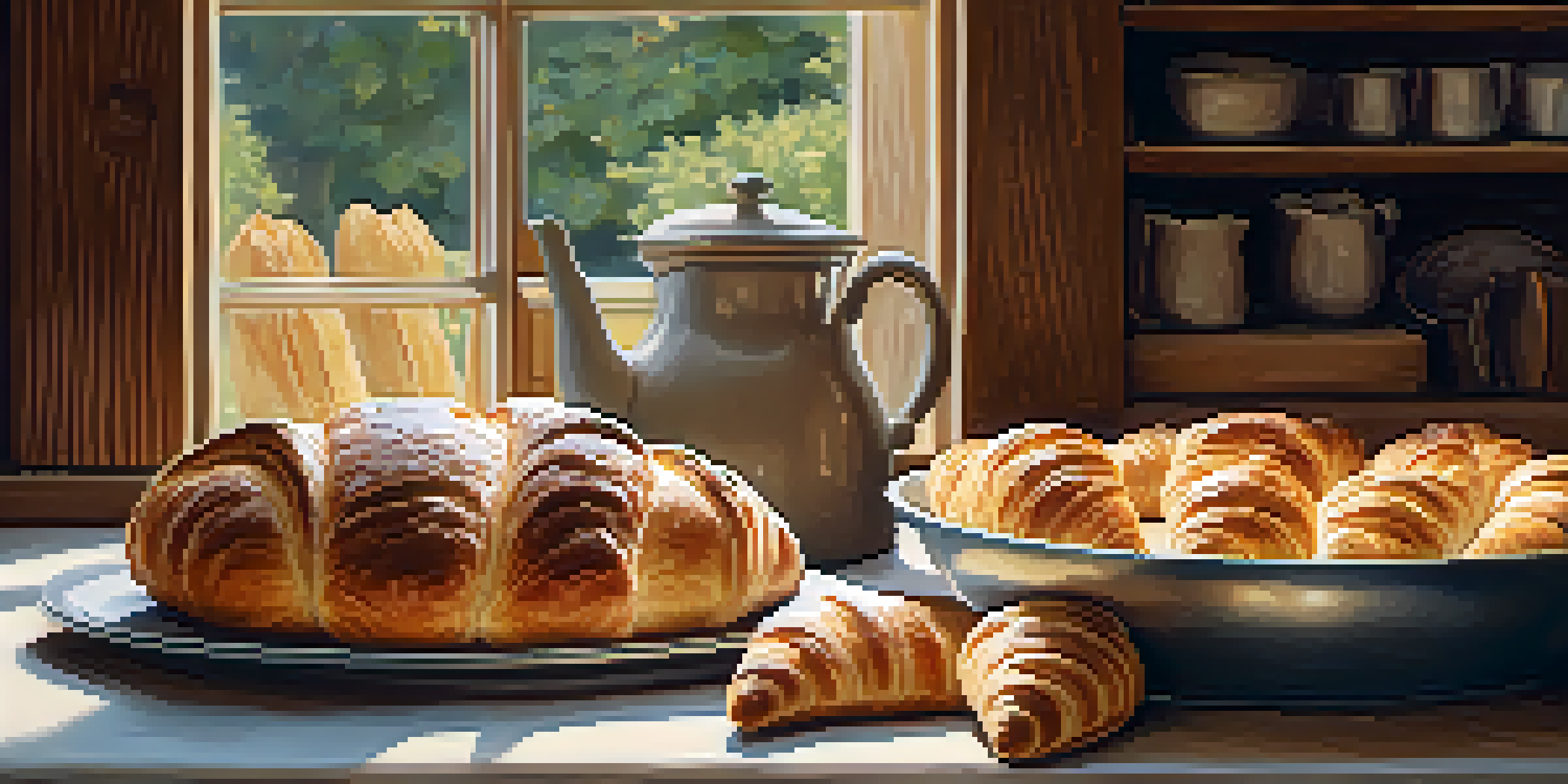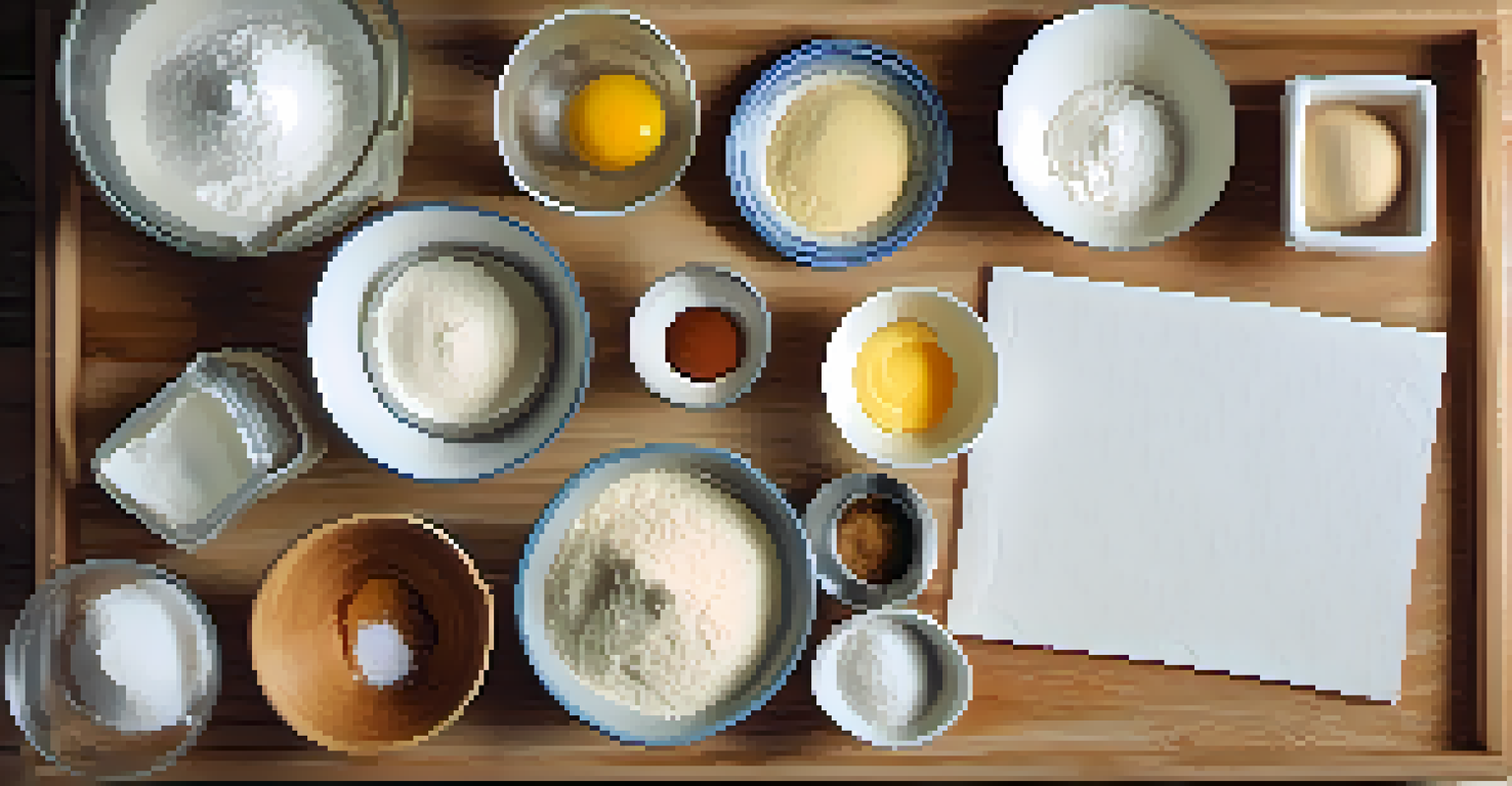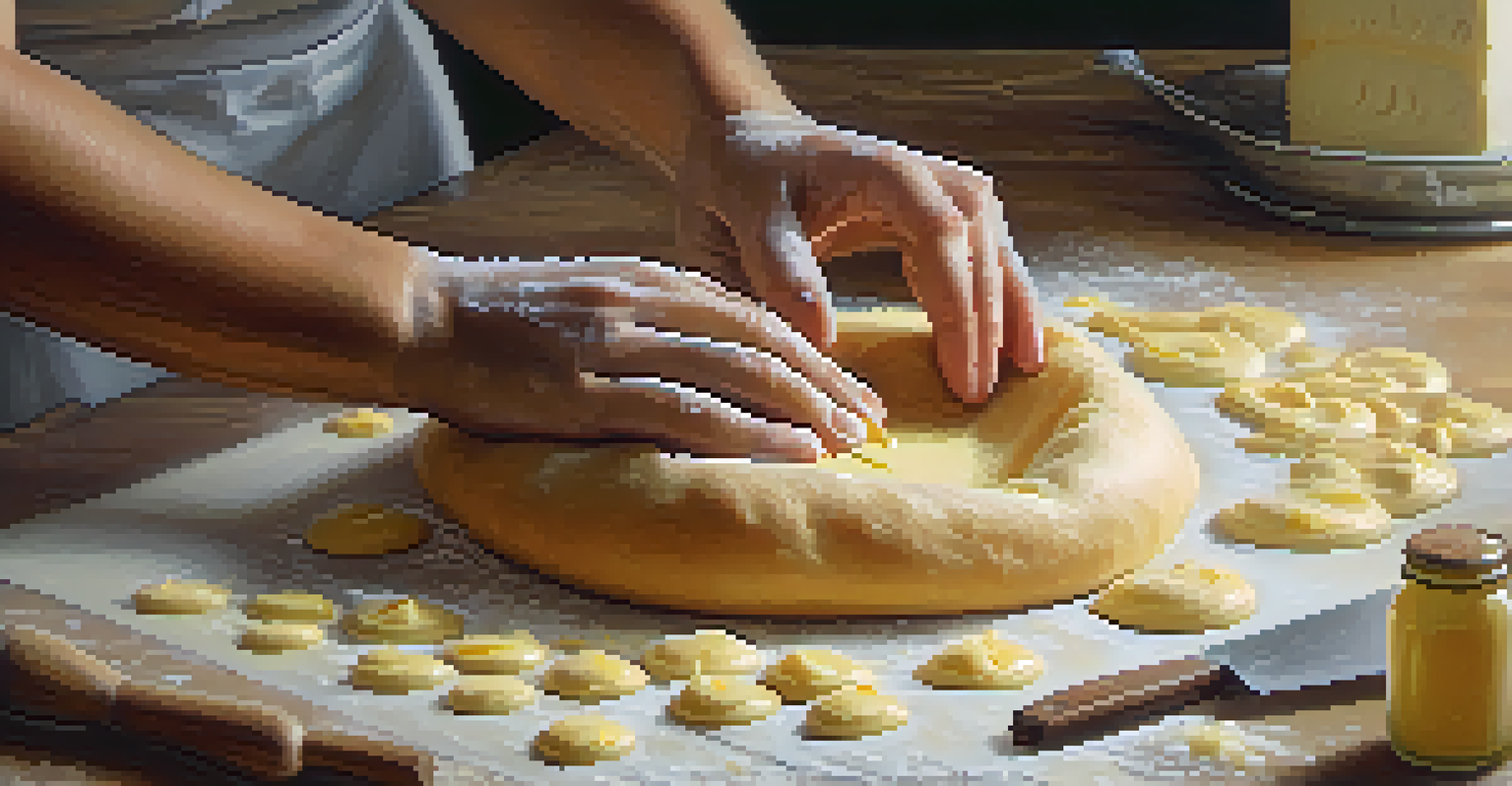Top 10 Common Mistakes to Avoid When Baking Pastries

Skipping the Chilling Step Can Ruin Your Pastry
One of the most common mistakes bakers make is skipping the chilling step. When you rush this process, the butter in your pastry dough doesn't have time to firm up, leading to a tough texture. Think of chilling as a mini-vacation for your dough—it's essential for achieving that flaky, tender pastry everyone loves.
Baking is both an art and a science, and knowing the difference can make all the difference in the outcome.
Chilling allows the gluten in the flour to relax, which results in a softer dough that bakes evenly. It’s like giving your dough time to gather its thoughts before the big bake-off. So, whether you're making croissants or pie crusts, don’t skip this crucial step.
Aim to chill your dough for at least 30 minutes, or even longer if possible. This simple habit can make a world of difference in the end result, ensuring your pastries are light and airy rather than dense and chewy.
Using the Wrong Flour Can Complicate Your Recipe
Not all flour is created equal, and using the wrong type can lead to disappointing results. All-purpose flour is a go-to for many recipes, but if you're aiming for that perfect puff pastry, you might want to reach for pastry flour instead. It has a lower protein content, which helps create that delicate texture that melts in your mouth.

Conversely, using bread flour can make your pastries too chewy due to its higher gluten content. Imagine trying to make a light soufflé with a dense batter—that's what happens when you choose the wrong flour! Always check your recipe to see what type of flour works best.
Chill Dough for Flakier Pastries
Allowing pastry dough to chill helps firm up the butter and relax gluten, creating a tender, flaky texture.
If you're unsure, don't hesitate to ask for advice at your local bakery or do a quick online search. The right flour can elevate your pastries from good to absolutely irresistible.
Overmixing Dough Leads to Tough Pastries
While it might seem like mixing your dough thoroughly is the way to go, overmixing can actually lead to tough pastries. When you mix too much, you develop gluten, which is great for bread but not for flaky pastries. Think of gluten as a rubber band—great for stretching but not what you want in your delicate pastry.
Good baking is all about precision and patience.
Instead, mix just until the ingredients are combined. You want to see small bits of butter in your dough; these will create those lovely layers during baking. Remember, less is more when it comes to pastry making, so mix gently and with purpose.
If you worry about lumps in your dough, remember that a few small pieces of butter are perfectly fine. They’ll melt during baking, leaving you with that coveted flaky texture.
Ignoring Oven Temperature Can Ruin Your Pastries
Every baker knows the importance of a hot oven, but many ignore the temperature settings. Baking pastries at the wrong temperature can result in uneven baking or a soggy bottom. Imagine baking a pie and finding the crust raw—definitely not the goal!
Preheating your oven is crucial, as it ensures your pastries start cooking right away, allowing for that beautiful rise. If you don’t preheat, you might end up with a flat, sad pastry instead of a golden, airy one. This is especially true for items like puff pastries, where the initial heat is key to creating layers.
Use the Right Flour Type
Choosing the correct flour, such as pastry flour for delicate pastries, can significantly impact the final texture.
Using an oven thermometer can help ensure you're hitting the right temperature. Investing a little time in checking your oven can save you from future baking blunders.
Not Measuring Ingredients Accurately is a Big No-No
Baking is a science, and measuring your ingredients accurately is crucial for success. If you've ever eyeballed flour or sugar, you might have noticed that not all pastries turn out the same. Just like in chemistry, the right balance of ingredients leads to the perfect reaction—especially when it comes to baking.
Consider investing in a kitchen scale for more precise measurements. It might seem tedious, but it ensures consistency in your baking, making it easier to replicate your successes. Remember, a cup of flour can weigh differently depending on how it’s packed, so precision is key.
If you prefer using measuring cups, be sure to spoon the flour into the cup and level it off with a knife, rather than scooping directly from the bag. A little attention to detail can make a significant difference.
Using Cold Ingredients Can Affect Texture
While cold butter is essential for flaky pastries, using cold eggs or liquids can hinder your dough’s ability to come together smoothly. Cold ingredients can result in uneven mixing, leading to a lumpy texture that won't yield the best results. Think of it like trying to mix ice cubes into warm water—it just doesn’t work well.
Allowing your eggs and dairy to come to room temperature before mixing can lead to a more uniform batter. This simple trick can enhance the texture of your pastries, making them lighter and fluffier. It’s a small step that pays off big time!
Measure Ingredients Accurately
Precise measurements are essential in baking, as even small deviations can lead to disappointing results.
So, set out your eggs and milk ahead of time, letting them warm up to room temperature. Your future self will thank you when you bite into that perfectly flaky pastry.
Failing to Follow the Recipe Can Lead to Disaster
It might be tempting to tweak a recipe on the fly, but doing so can lead to unexpected results. Pastry making is an art that requires careful attention to detail, so following the recipe closely is essential. Think of it as a roadmap—deviating from it can lead you in the wrong direction.
If you’re feeling adventurous, consider making a few test batches before going all out. This way, you can experiment without the pressure of serving guests. It’s a wonderful way to learn while also ensuring your final product is top-notch.

Remember, even professional bakers stick to tried-and-true recipes until they feel confident enough to make adjustments. Don’t rush the process; good things come to those who wait—and measure!